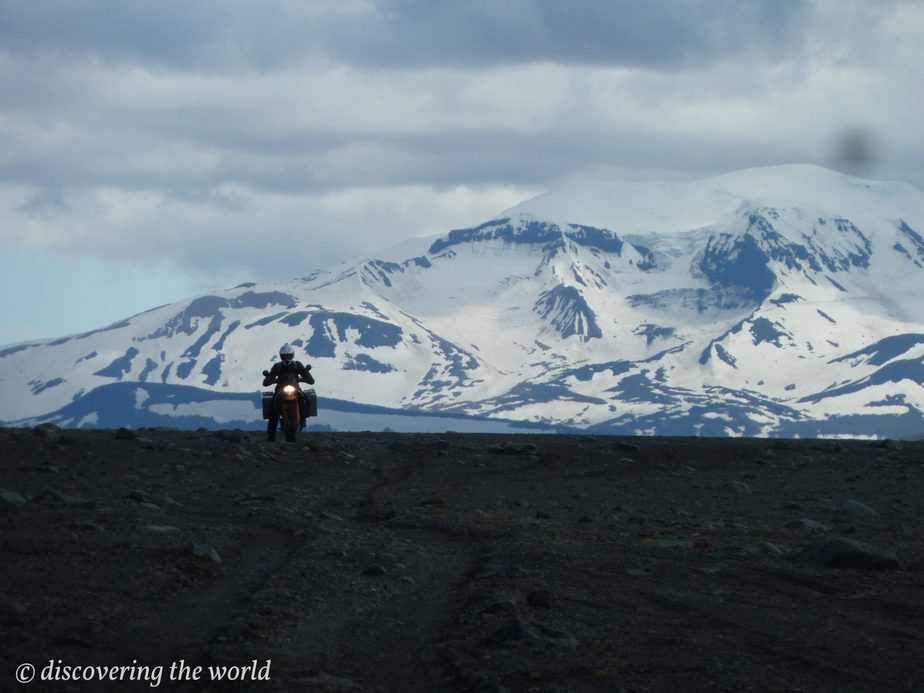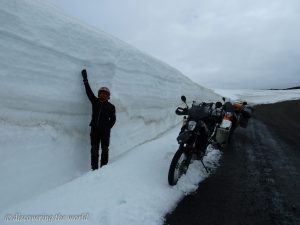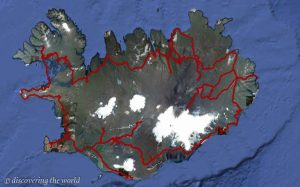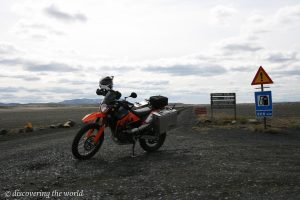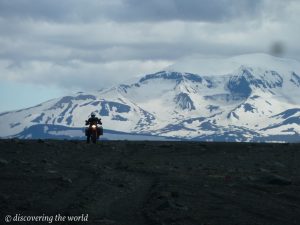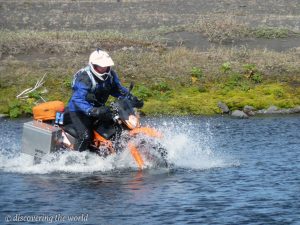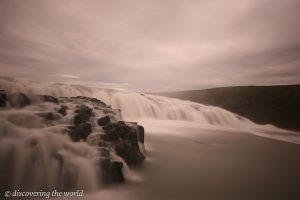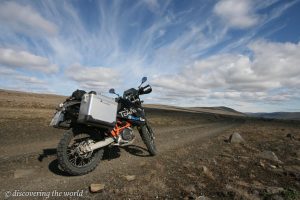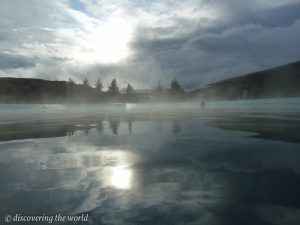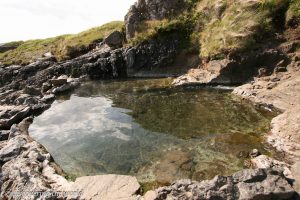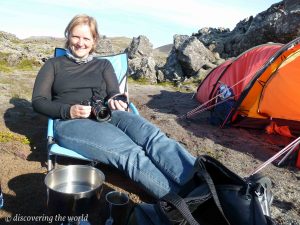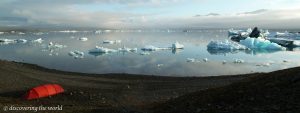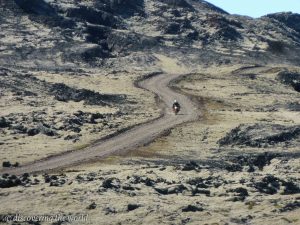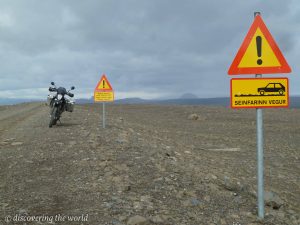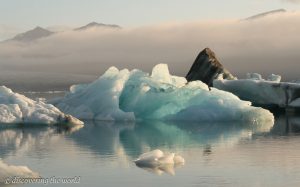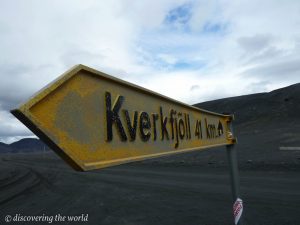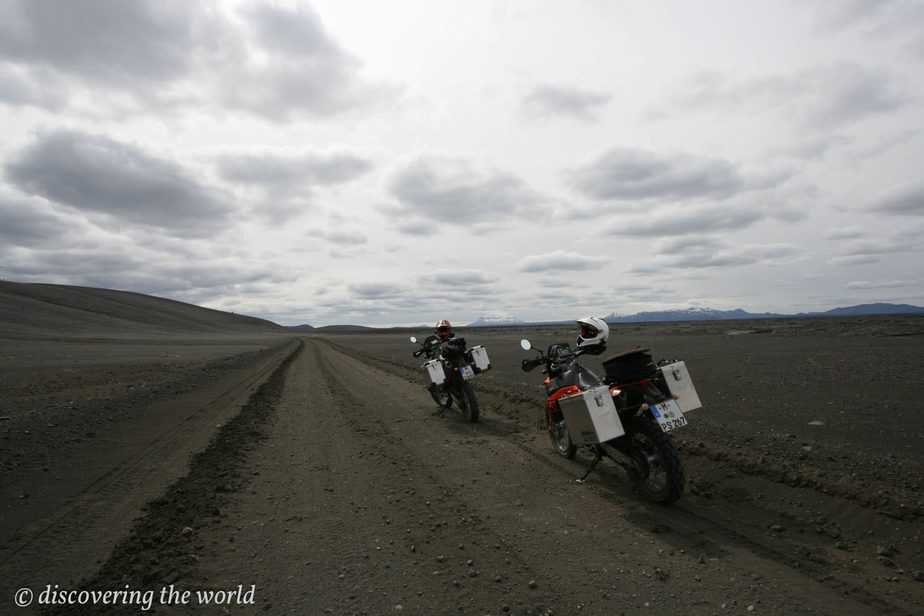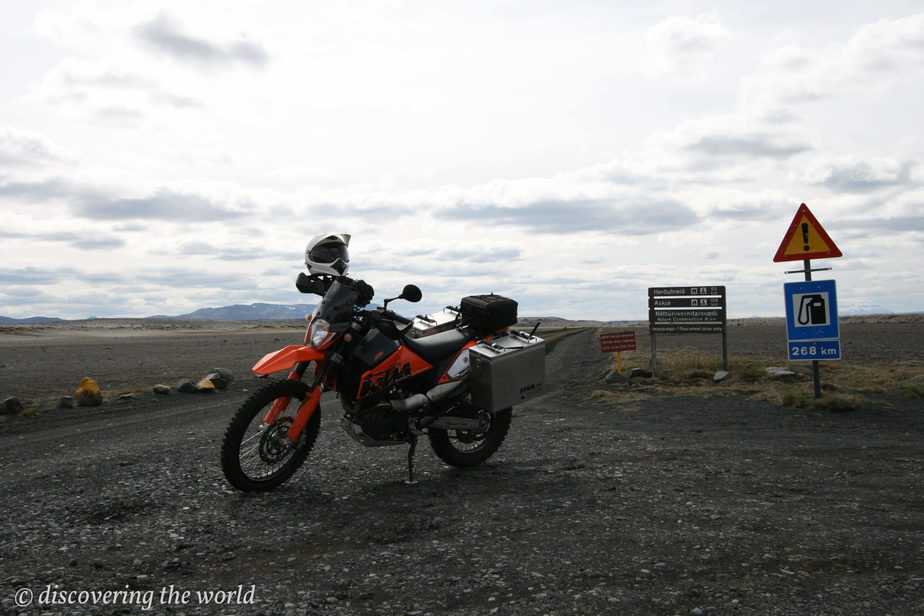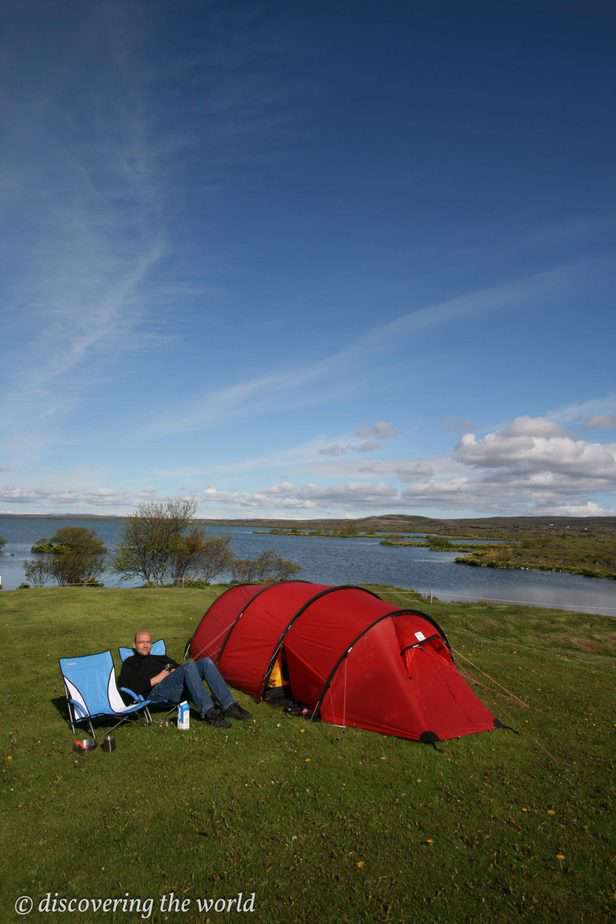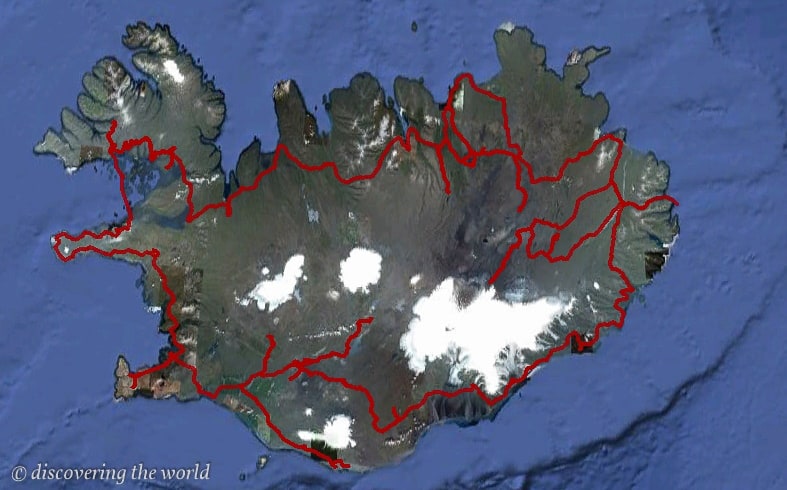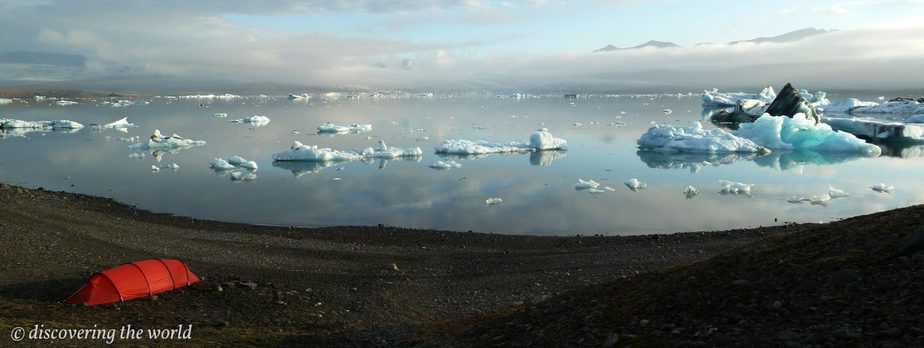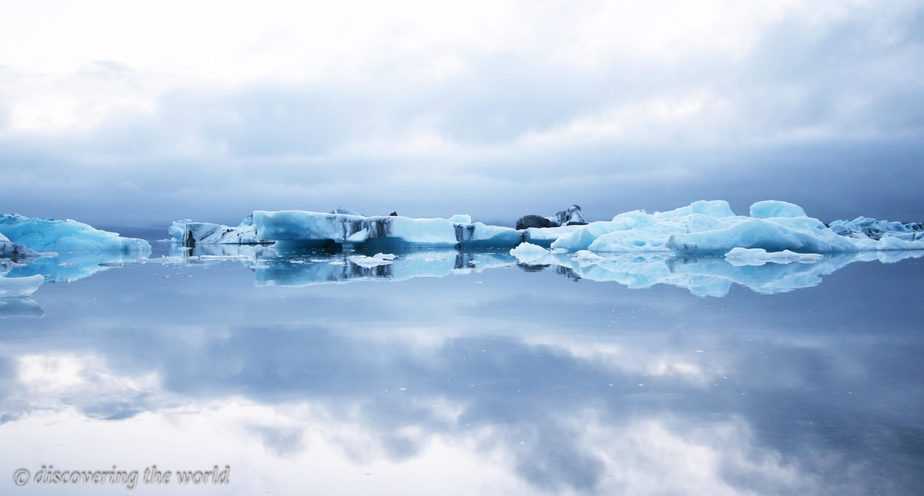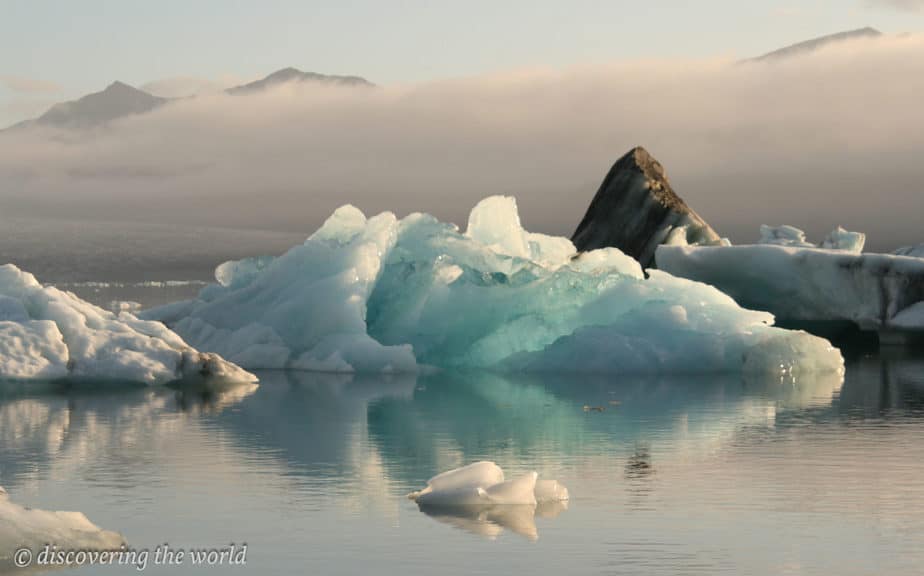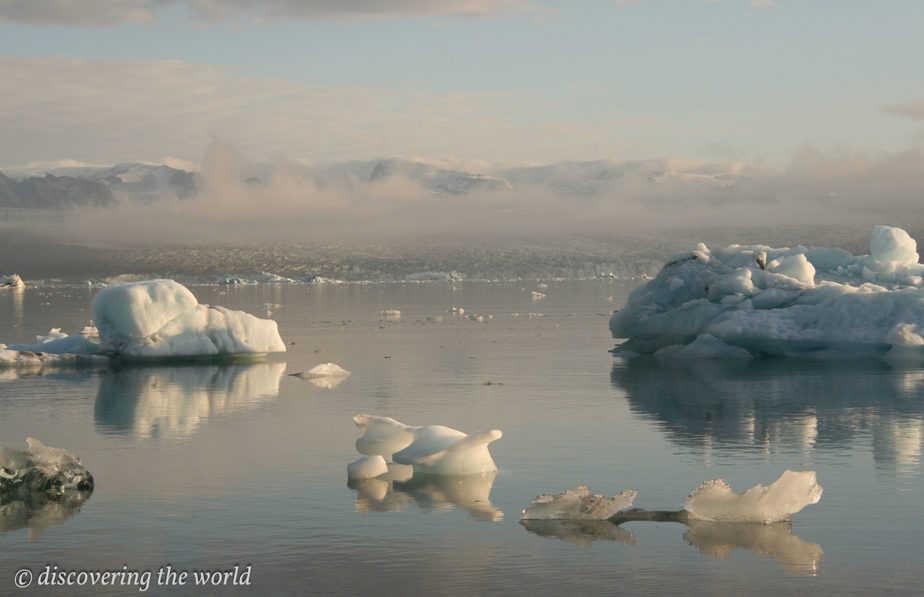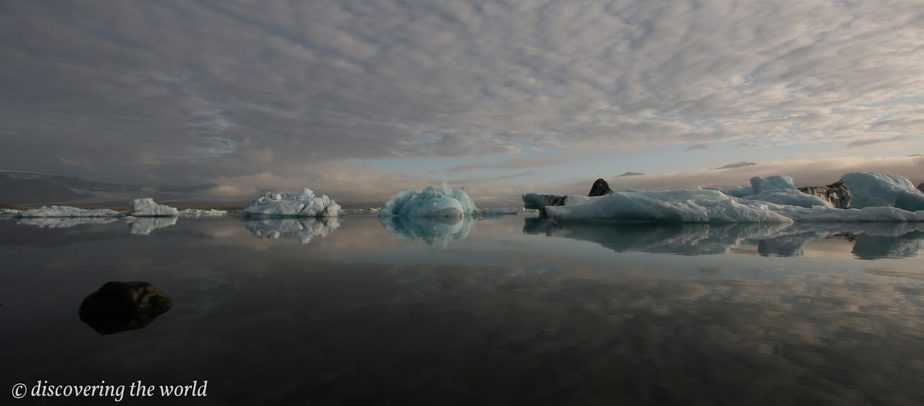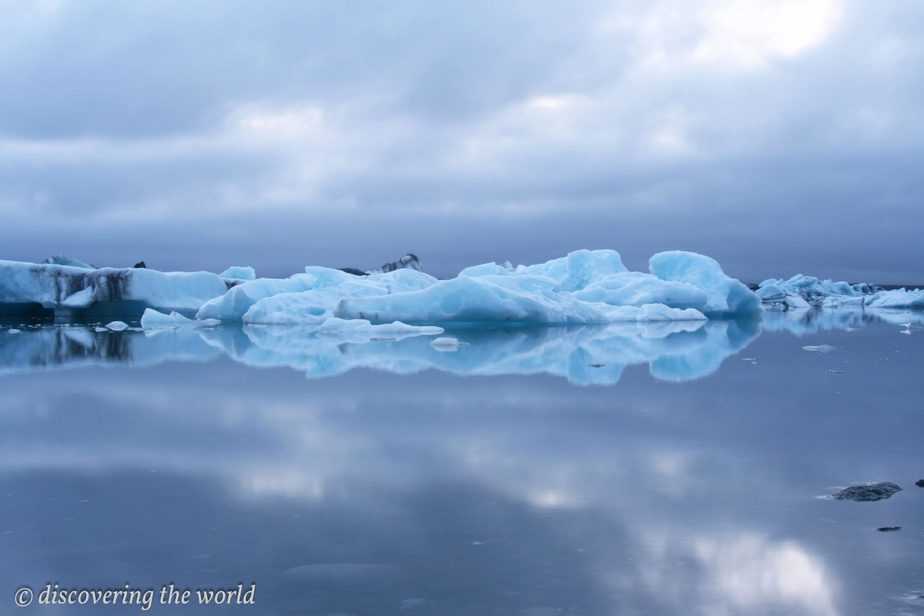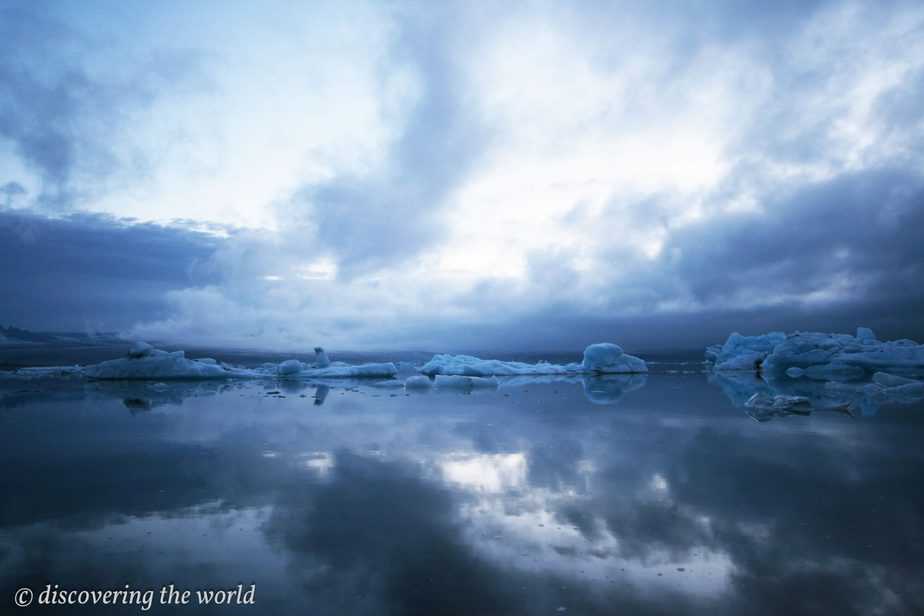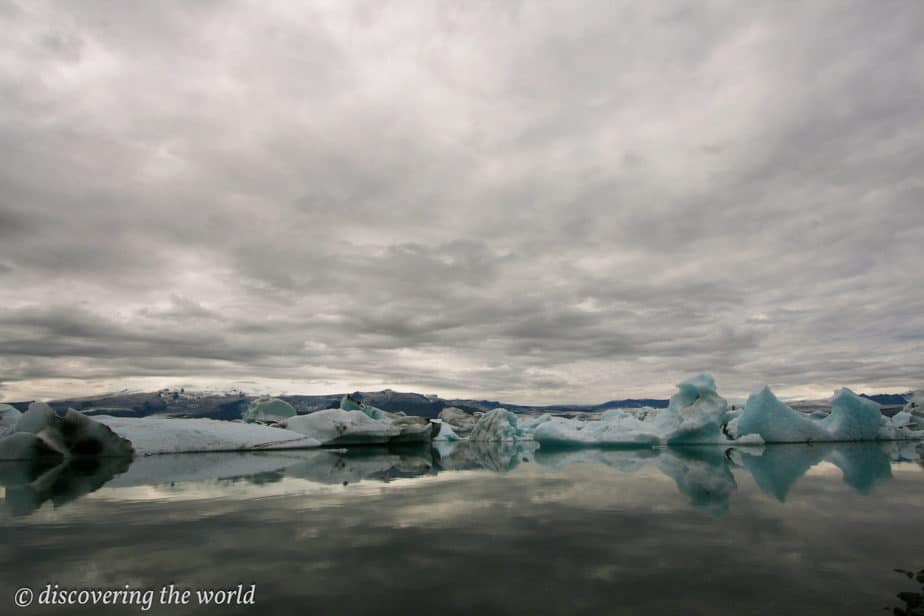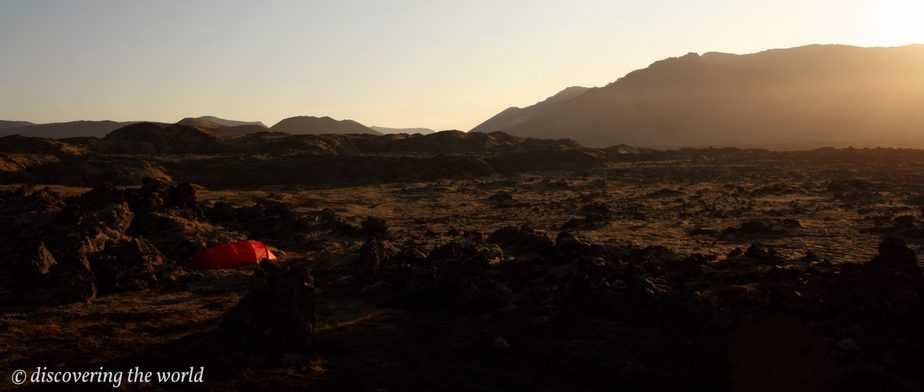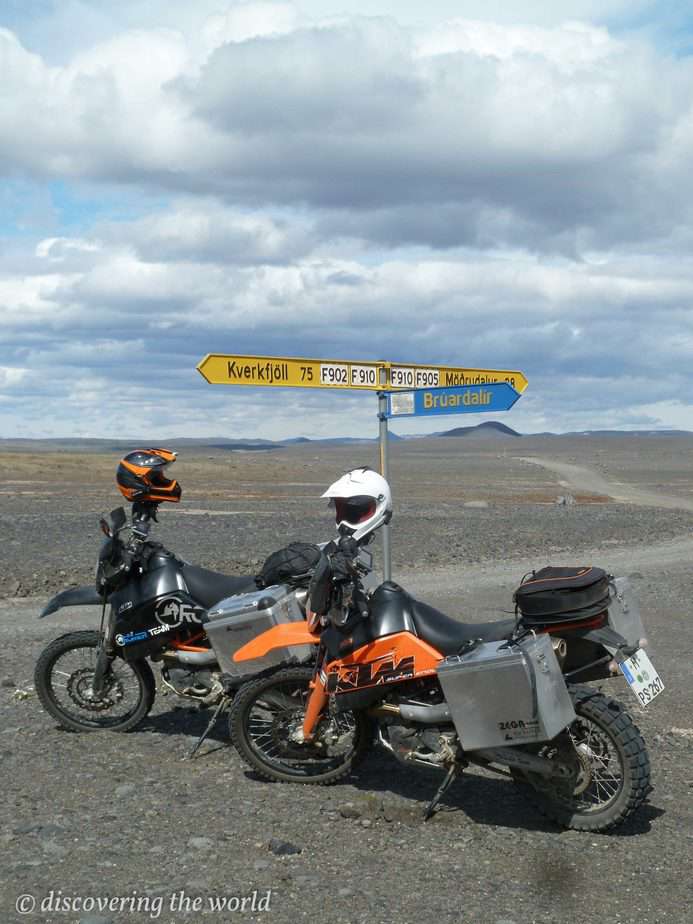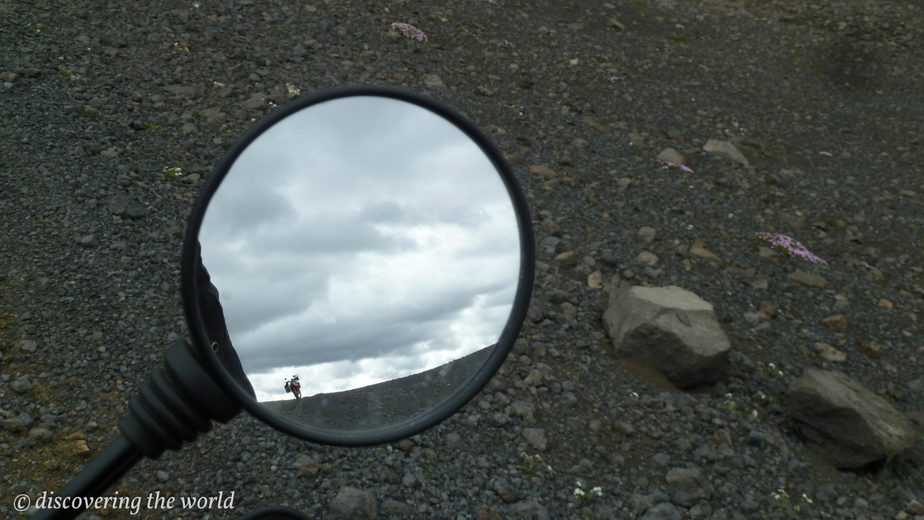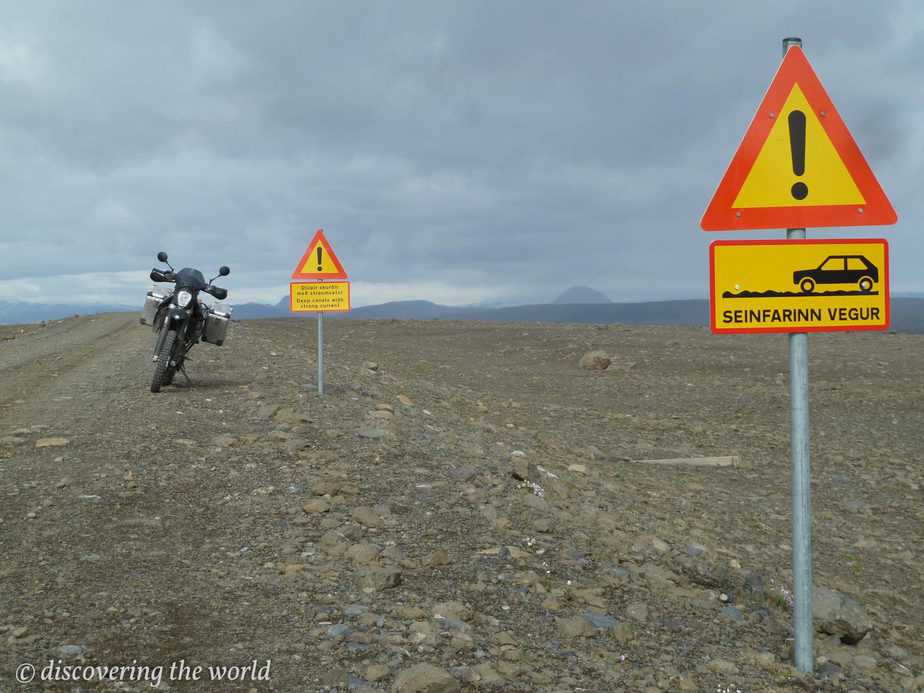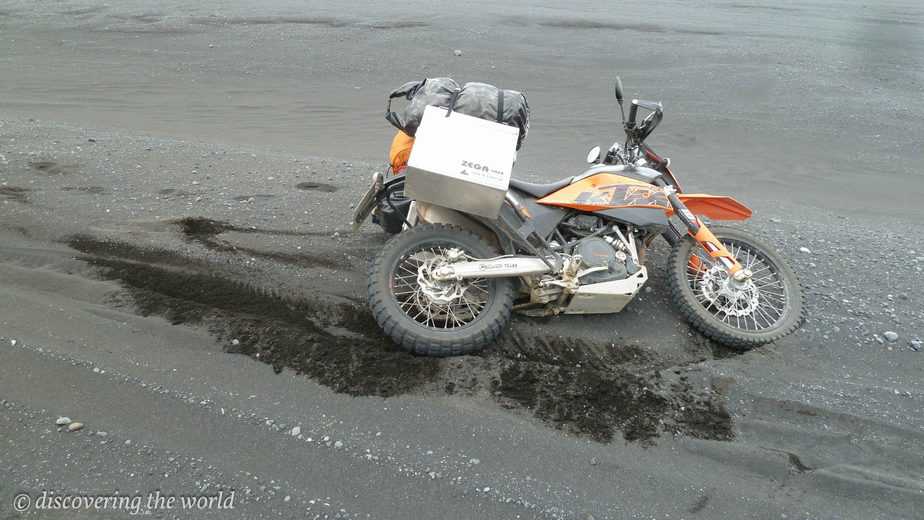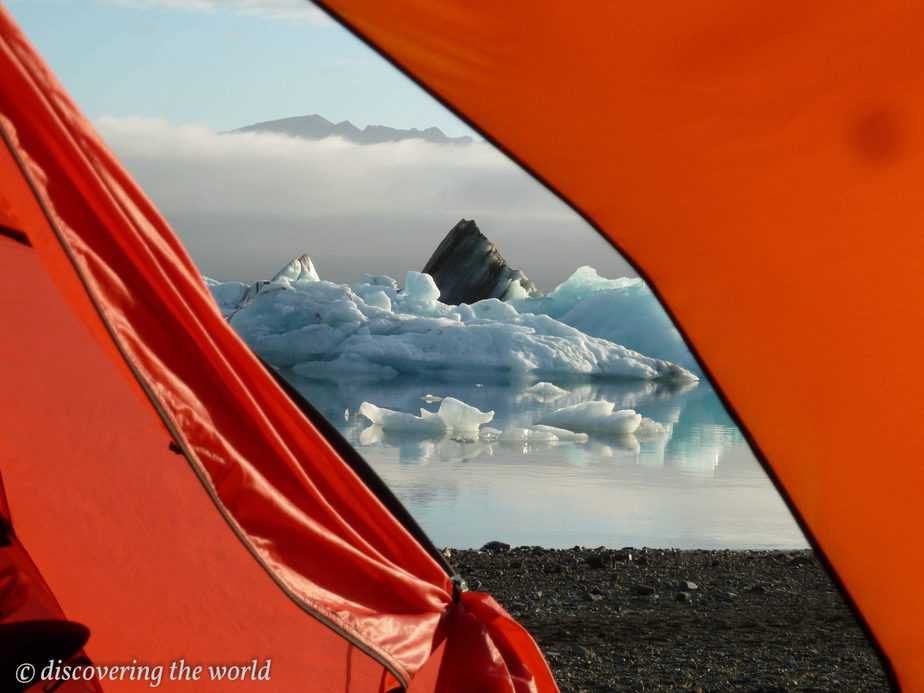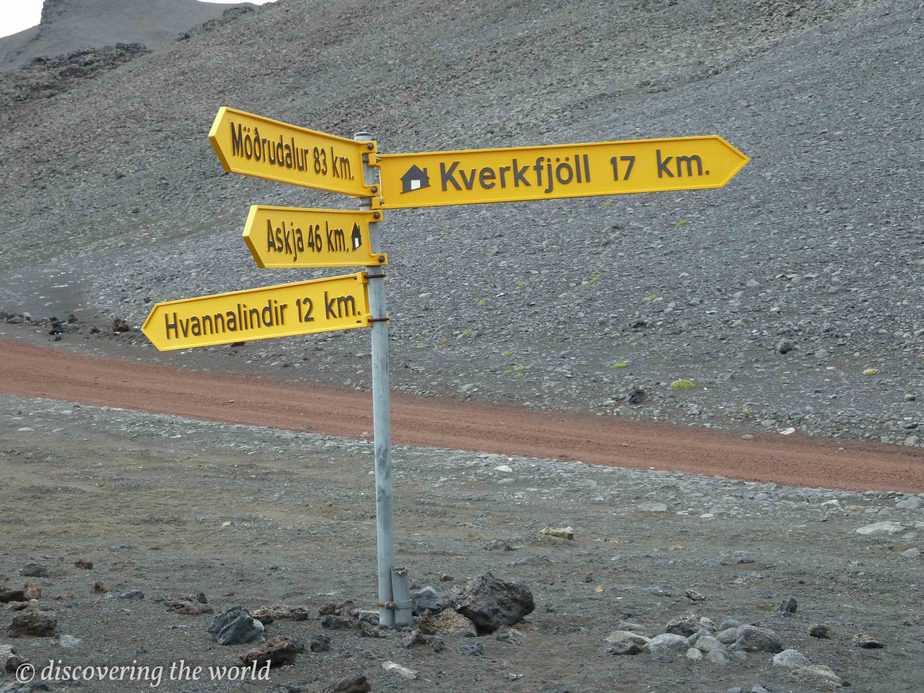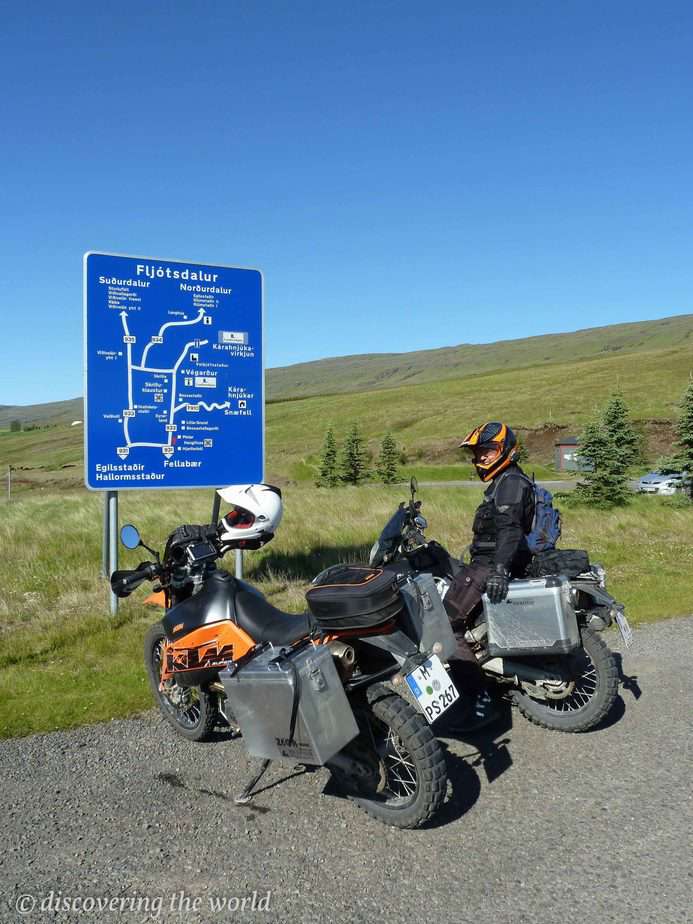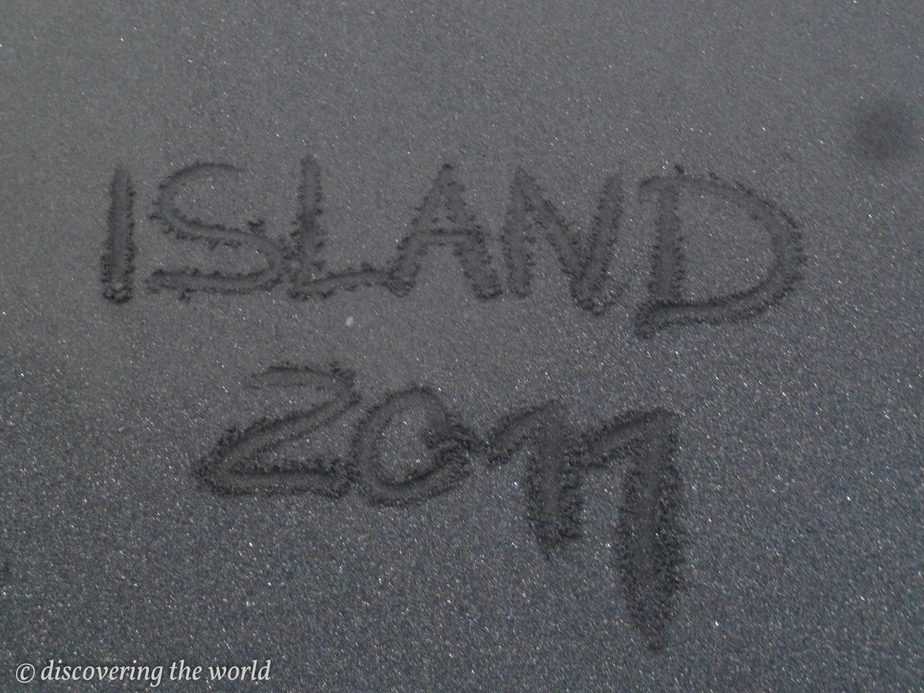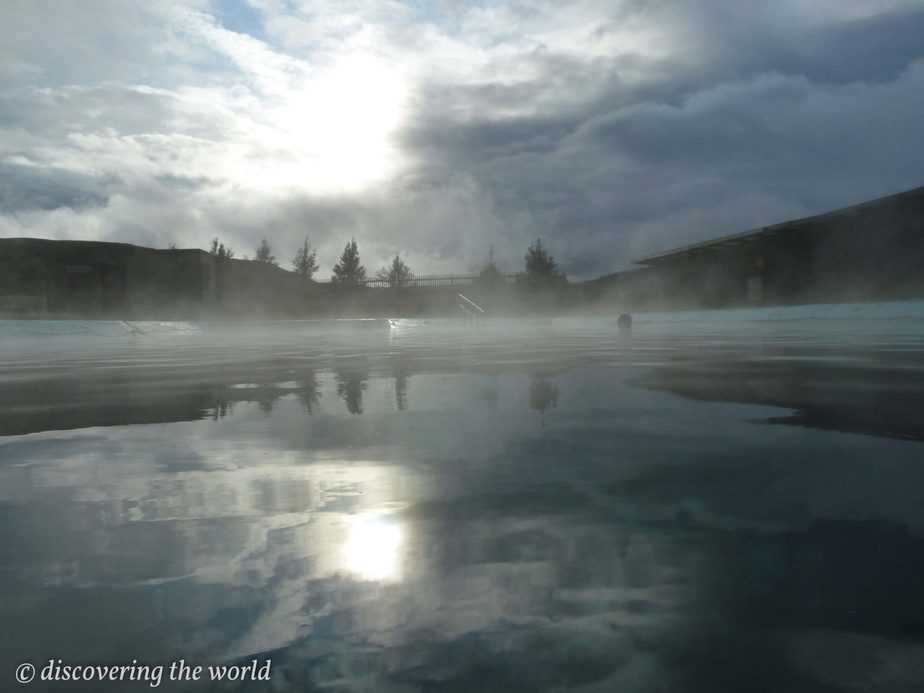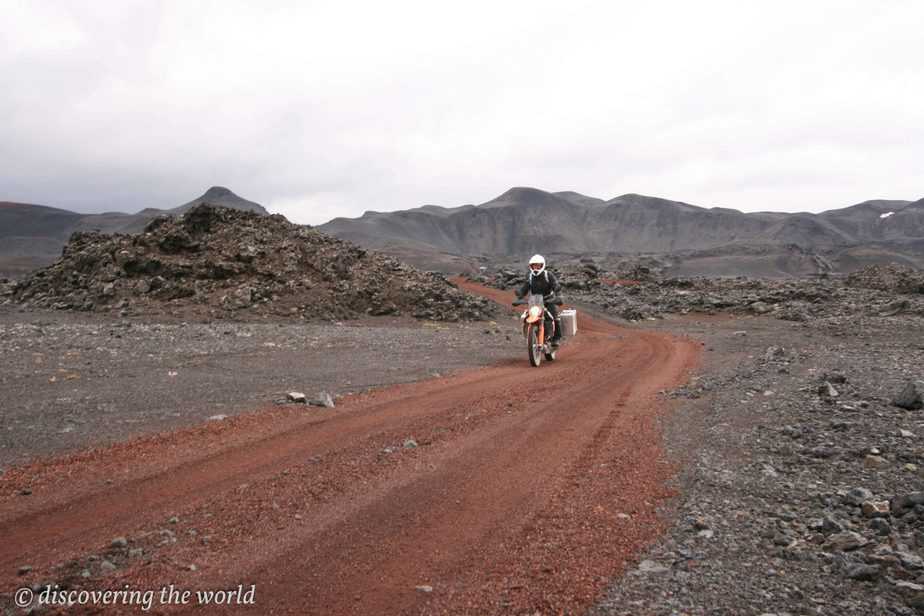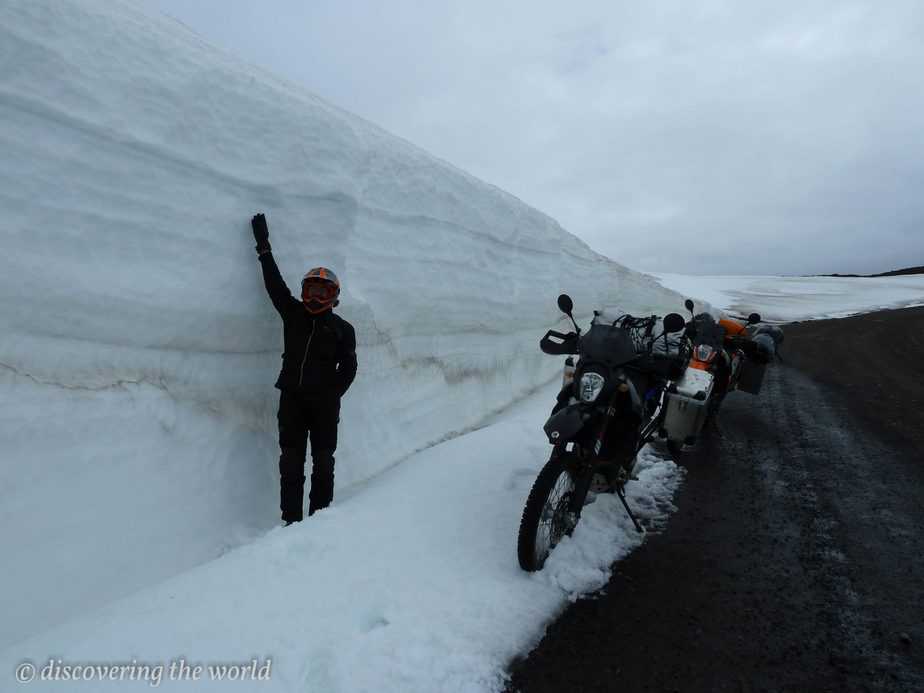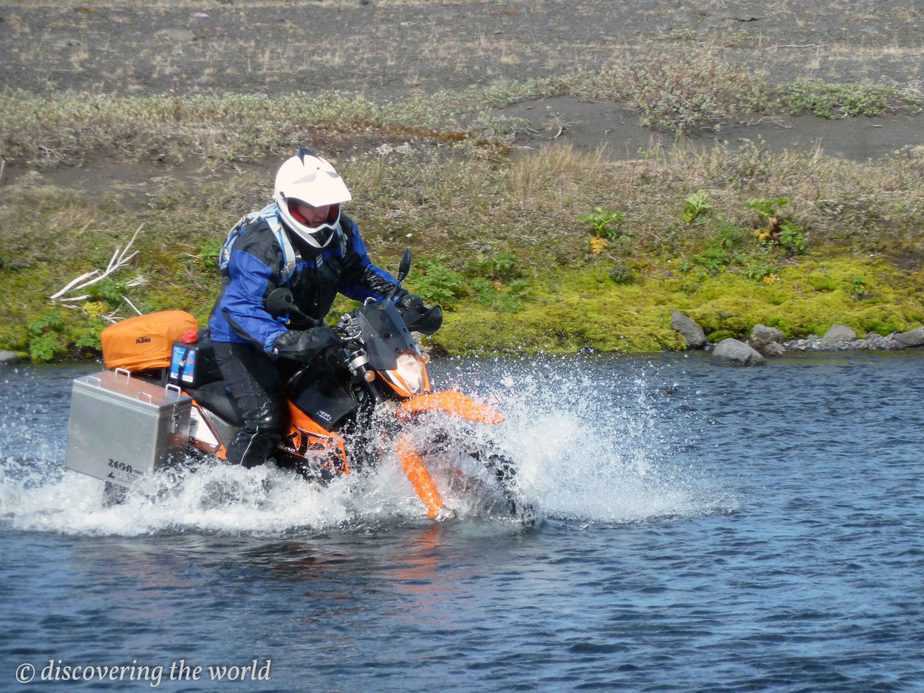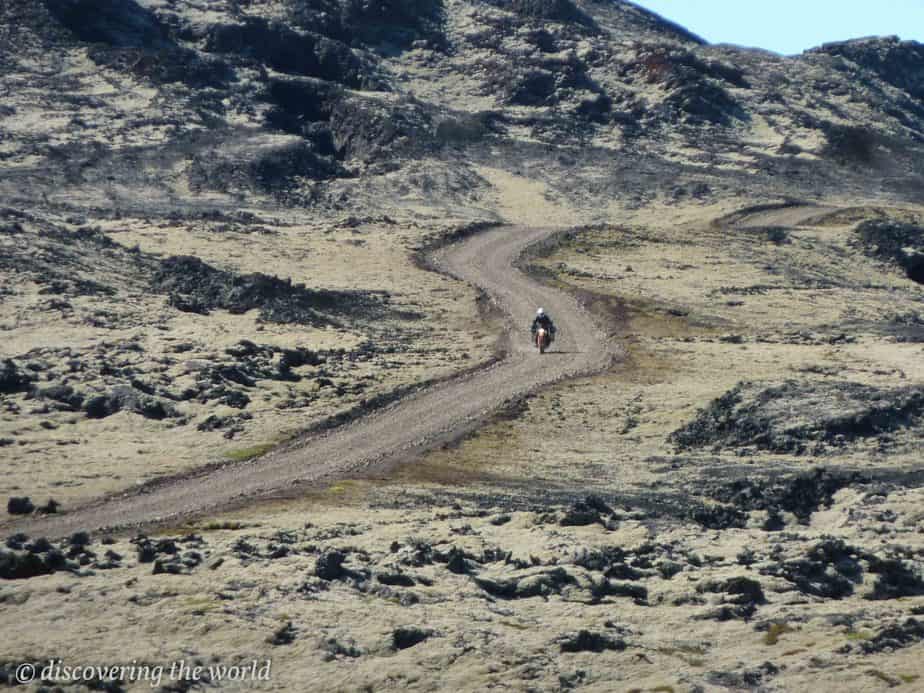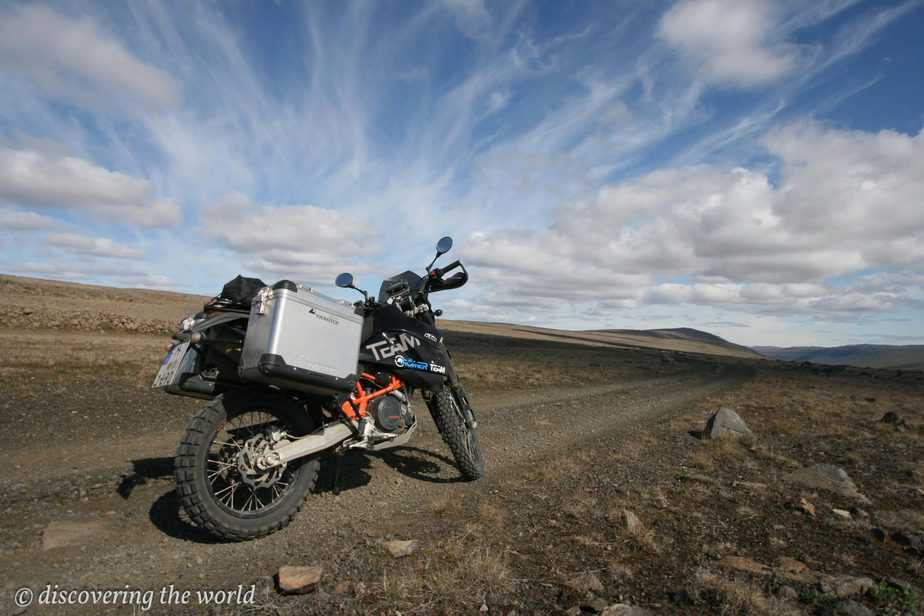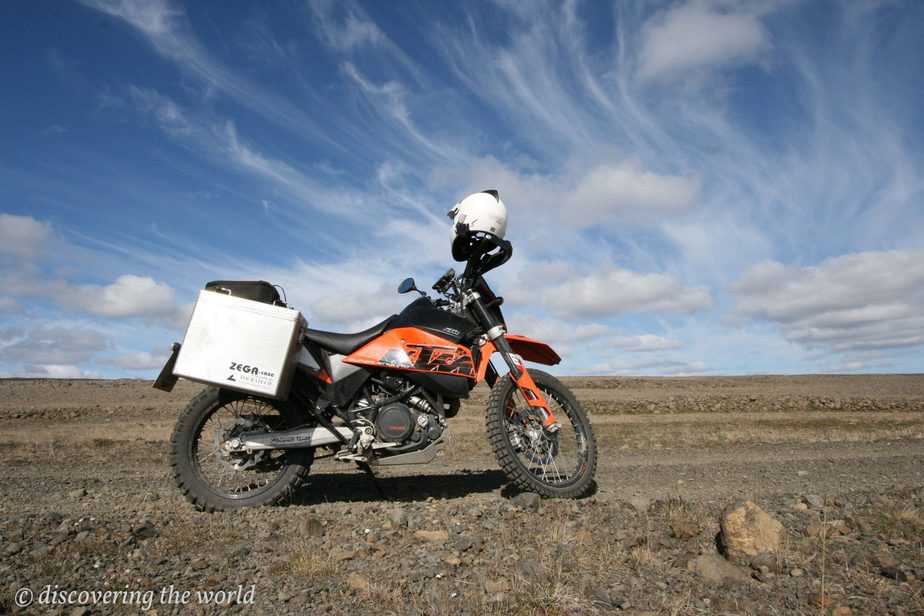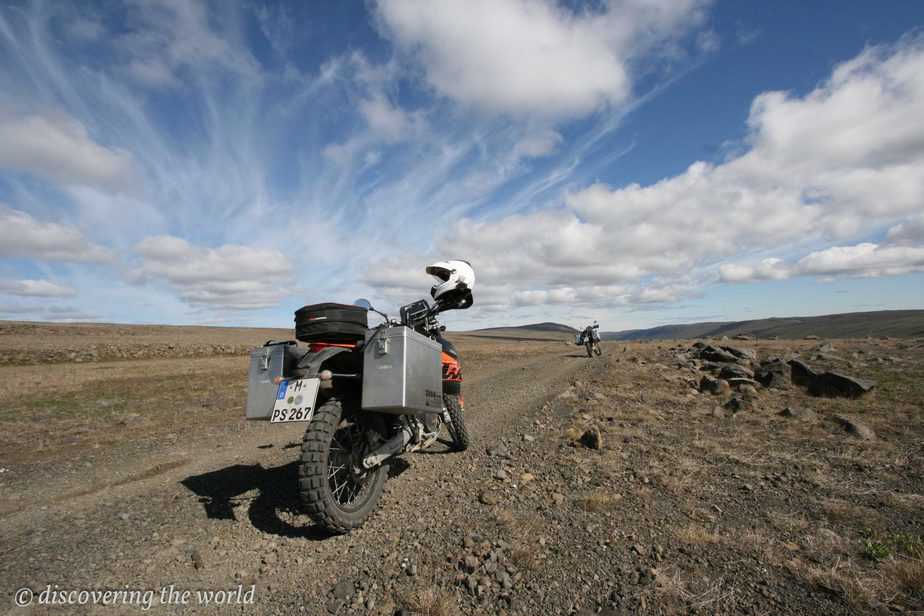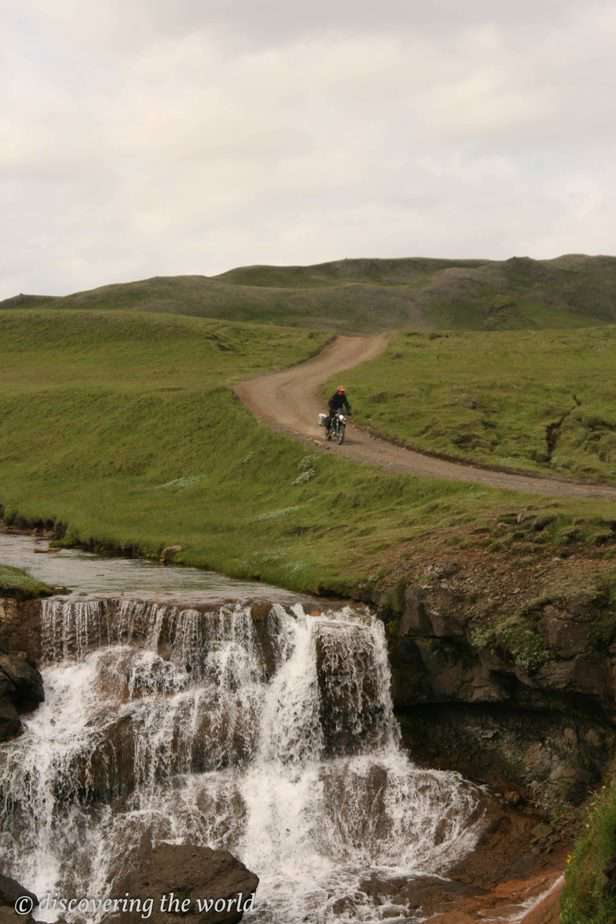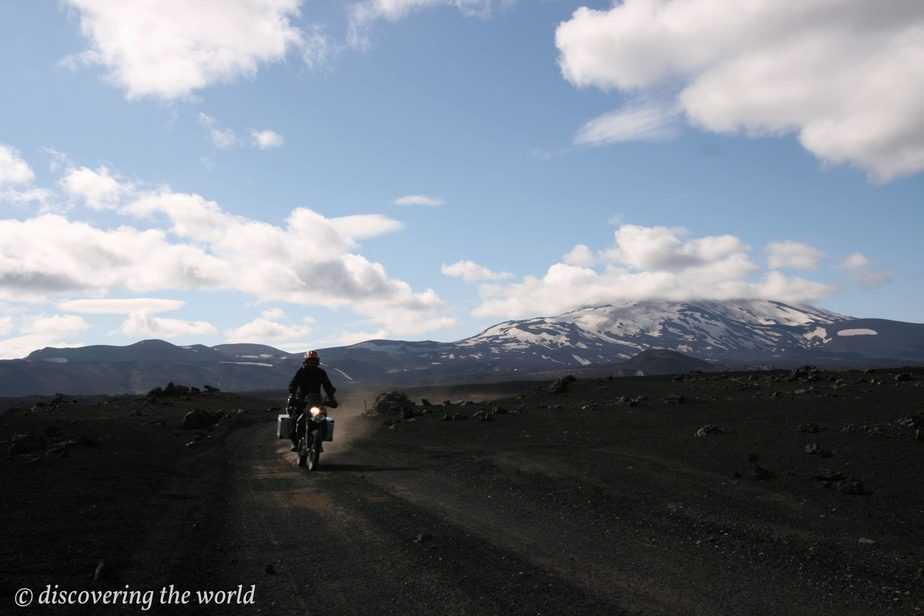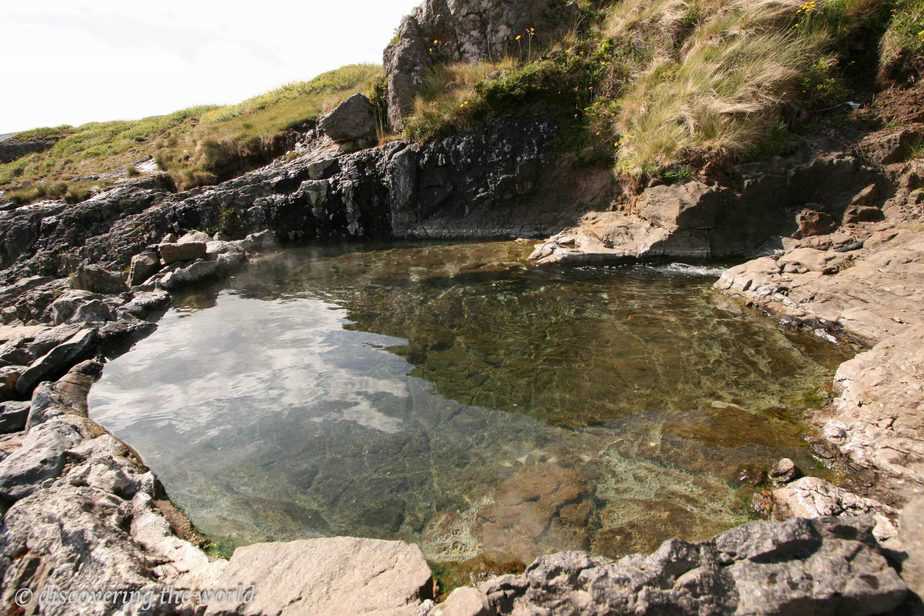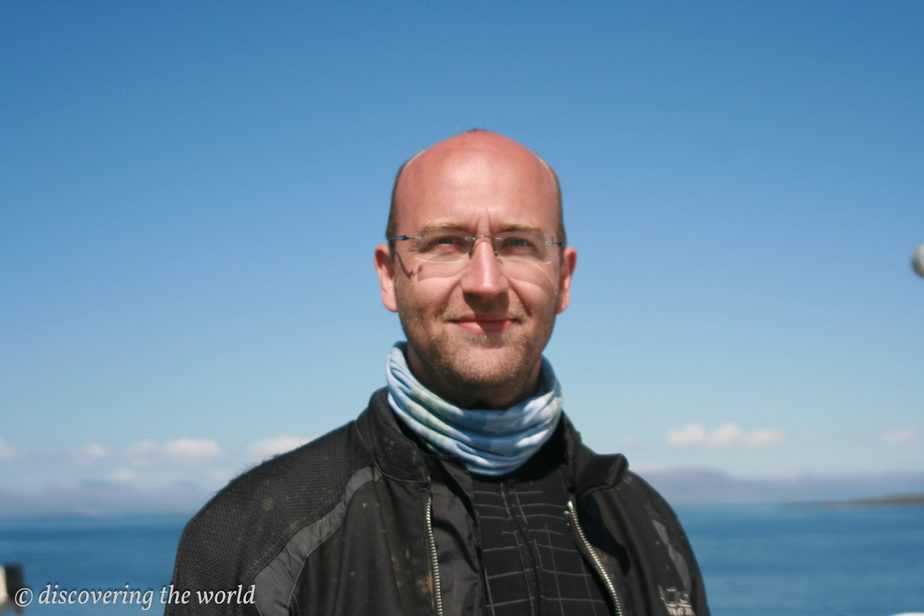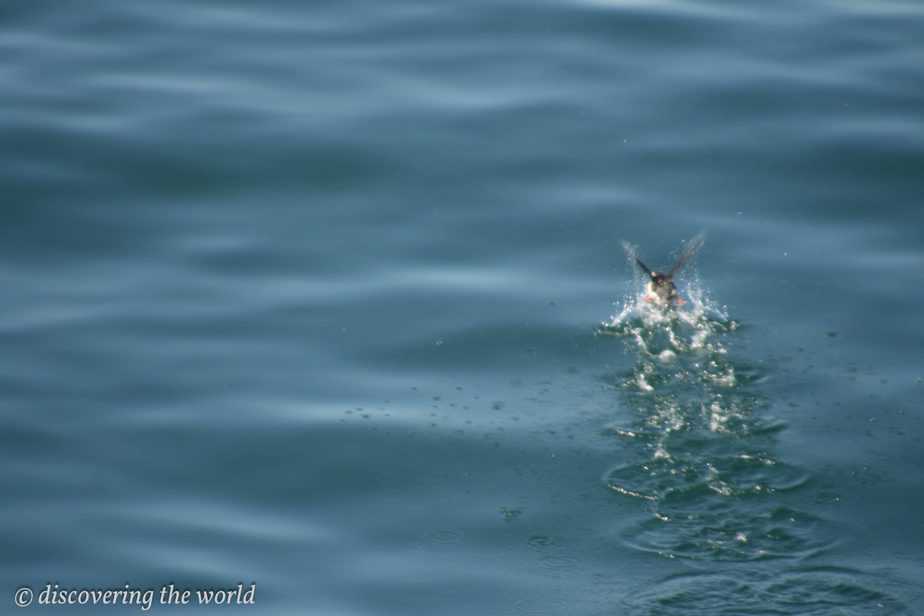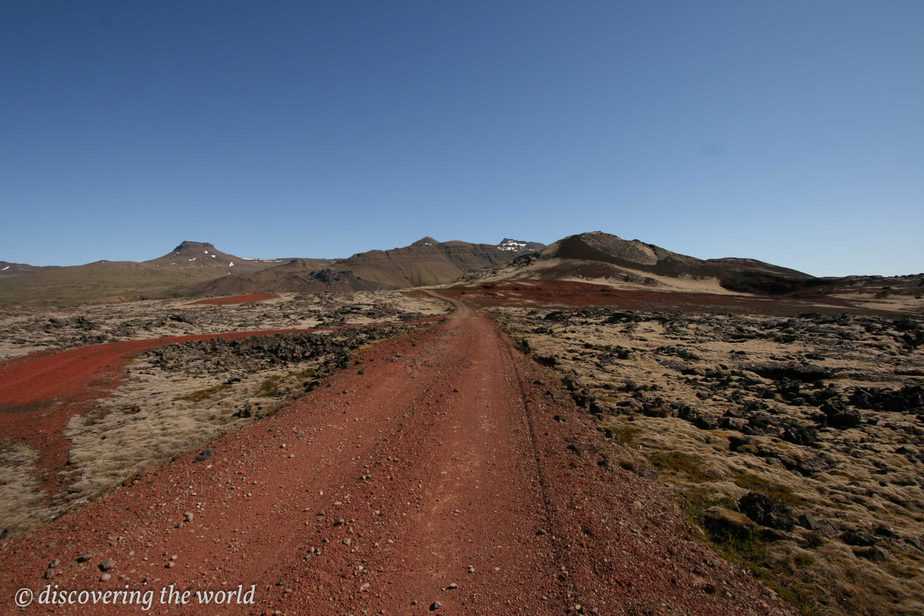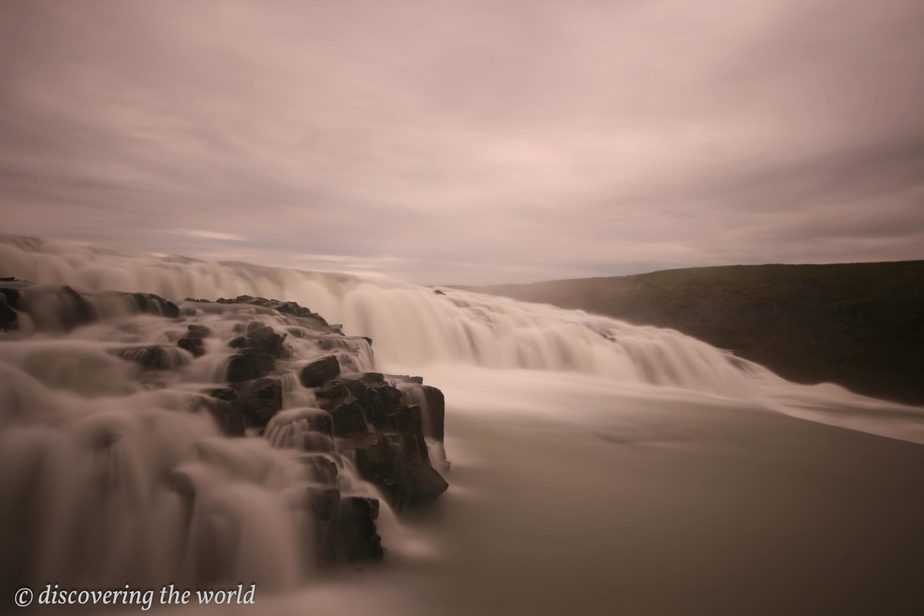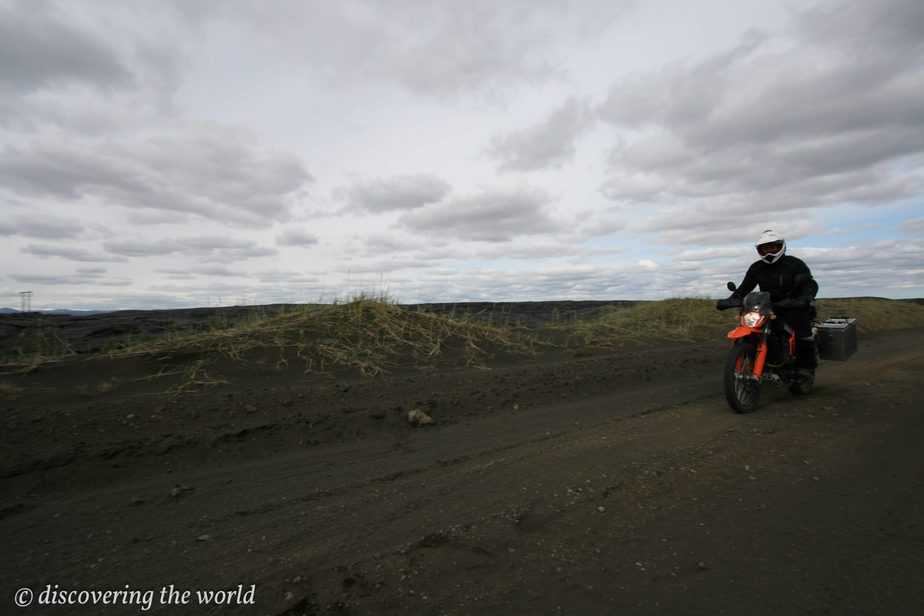It is cold. More precisely: freezing cold.
We left the ferry in Sejdisfjördur a few minutes ago and fight our way up the first hills with the KTMs towards Egilstadir. The scoreboard shows 3° degrees Celsius, in the dense fog we orientate ourselves by the taillights of the cars in front.
One of the best ideas when planning the vacation was to equip the KTMs with heating grips.
Who came up with the stupid idea to travel Iceland by motorcycle?
On the back of the hill chain the fog has fortunately almost disappeared, we refuel and warm up with hot coffee. We have a lot to do.
Already last winter we started to plan our vacations. Unusually early for us. The ferry had to be booked, vacations had to be announced and planned, and in addition, there is a lot of time in winter to study travel guides and internet reports. Since Iceland is not that big, we had quite quickly an idea of what we wanted to see. Besides that, there should be enough buffers so that we could relax, sleep in, take pictures and so on. We have enough stress at work, that shouldn’t be on vacation as well.
That’s why we chose the “slow” way: from Munich by car train to Hamburg, on motorcycles to Denmark and then 48 hours on the ferry.
Enough time to get ready for vacation emotionally. We could also bring our own motorcycles and were freer in Iceland in the decision which routes we want to drive. In order to move the KTMs (690 Enduro / 690 Enduro R) in a species-appropriate way, we left the R1 ring road as often as possible. The R1 goes once around Iceland and is well developed and asphalted in most places. But not everywhere. But the most exciting routes for the KTM are in the highlands or in the remote corners of the many fjords. We had equipped the KTMs in advance with additional tanks of the “KTM-950-Super-Enduro”, off the ring road gas stations are rare and our route plans require stages of 400 km without gas station, without additional fuel reserve not to make.
It is the end of June, many of the highland routes are unfortunately still closed, such as the Sprengisandur route or part of the runway to Askia. Spring 2011 was one of the coldest since weather records have been kept in Iceland, and there is still relatively much snow. Every day, we keep ourselves informed about the road conditions and replan our routes accordingly.
We start in northern direction (it is raining in the south) and camp in Myvatn on the campsite. From there we make day trips, but the first attempt to get to Askia fails terribly and unfortunately also under the eyes of too many spectators: right in the 2nd ford I can’t get against the current, my foot doesn’t reach the bottom in time in the deep water and I’m lying in it: wet up to my navel, my ego is scratched pretty bad, otherwise not much happened. We dismantle the bike up to the spark plugs until the engine is running again and return to the campsite. We use the day we won (a two-day tour for Askia was planned) for whale watching in Husavik. Wonderful experience – I can only recommend it to everybody!
Waterfalls are one of the outstanding sights of Iceland. They are everywhere and in all shapes and sizes. At the beginning of the vacation we went there regularly, always stopped and took pictures. Later the sight became a matter of course and we often just drove past. Nevertheless the Icelandic waterfalls are one of the most beautiful moments of the vacation. This is especially true for the hard to reach ones. The Godafoss for example or the Seljalandsfoss are very beautiful, but with constantly several busloads of visitors the feeling of the “special moment” just doesn’t come up. On the other hand, if you have a long muddy gravel road behind you, have driven through various sheep gates and then have to climb down a steep hill, where you stand completely alone and look at a waterfall, then you really get a feeling of adventure and freedom. Thank you, Aldeyarfoss!
From Myvatn we continue towards the Westfjords. Here we quickly get the feeling of being alone on the island. Sometimes we don’t see other vehicles for hours. The road surface changes from asphalt to fine to coarse gravel and back. Smaller tracks are sometimes very sandy, but are quite fun. We are happy to have a lot of time and hardly miss any small tracks.
We regularly recover from strenuous routes in hot pools. These mostly 38-40° warm pools can be found everywhere in Iceland. Many places, even the very small ones, have swimming pools.
But there are also “natural pools”: warm water in natural pools, sometimes in the middle of a meadow or in rock pools, clean and warm, often in the middle of nowhere and hard to find: many times we would have given up searching if our book “Thermal Pools in Iceland” did not give the GPS coordinates.
From the West Fjords you take a ferry south to the Snaefellsnes Peninsula. Here we experience one of the most beautiful nights of the vacation: we camp wildly at the edge of a lava field. Not a soul in sight, just peace and quiet and a view. Great (I admit, I am slowly running out of superlatives …).
Icelandic summer nights are very unusual for Munich residents: Sunset is not before midnight, it never gets really dark. Or to put it in the words of Icelandic writer Hallgrimur Helgason: “The Icelandic summer is like a refrigerator that you leave open for six weeks: the light is on, the freezer thaws, but it never gets really warm. The advantage of this is that around two o’clock in the morning the light is perfect for taking pictures and you wake up without an alarm clock.
Meanwhile we are on the way to Reykjavik. Already 100 km before, the traffic becomes noticeably denser, the roads multi-lane. Iceland has about 330.000 inhabitants, between 70 and 80% of them live in the capital. Reykjavik is a pretty city. Many small stores, boutiques, galleries. Fortunately, you will search in vain for the big chains of German pedestrian zones.
We use the time in Reykjavik to give our machines new rear wheels. We had mounted new ones right before the trip, but the rough asphalt and gravel roads take their toll. After only 2,500 kilometers …
In Reykjavik we also treat ourselves to the most expensive food on the trip. After some discussion about “is that allowed?” curiosity wins, we order whale and puffin. Realization: not bad at all. The whale is a small minke whale, they taste similar to beef, but with a distinct aftertaste of liver. Similar to the puffin: like chicken with liver.
We also used the time in Reykjavik to visit the Blue Lagoon. This is a very famous thermal bath. The Lonely Planet says: “If it is too expensive, too clinical, too crowded, you are right somehow, but if you stay away, you miss something special”. That’s right, we spent at least five hours in the warm, milky blue thermal water and enjoyed it very much.
From Reykjavik we head east. Here the tourist density is much higher than in the rest of the country, but at least there are some highlights: the geyser Strokkur, the volcano Eyjafjallajökull (which paralyzed European air traffic in 2010 with its ash cloud), the glacier lagoon Jökulsarlon and some more.
But the way there is a tough one: even more water crossings, sand and scree slopes.
To be continued
